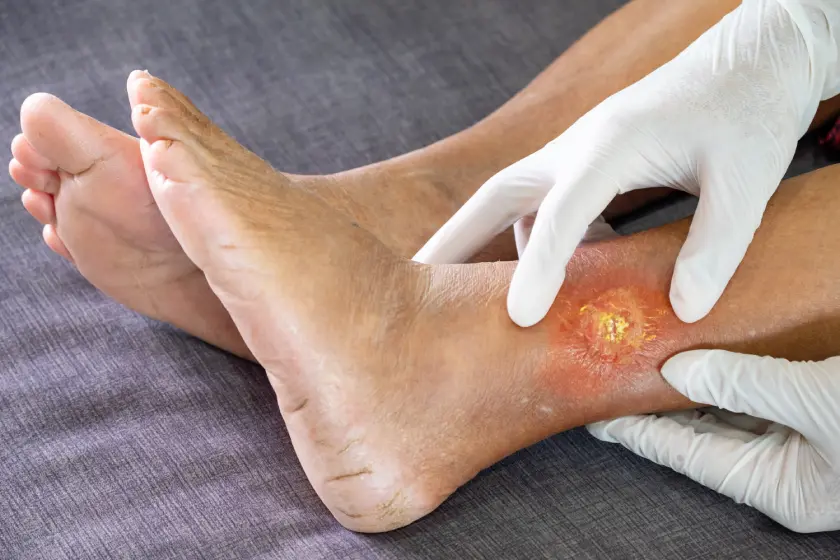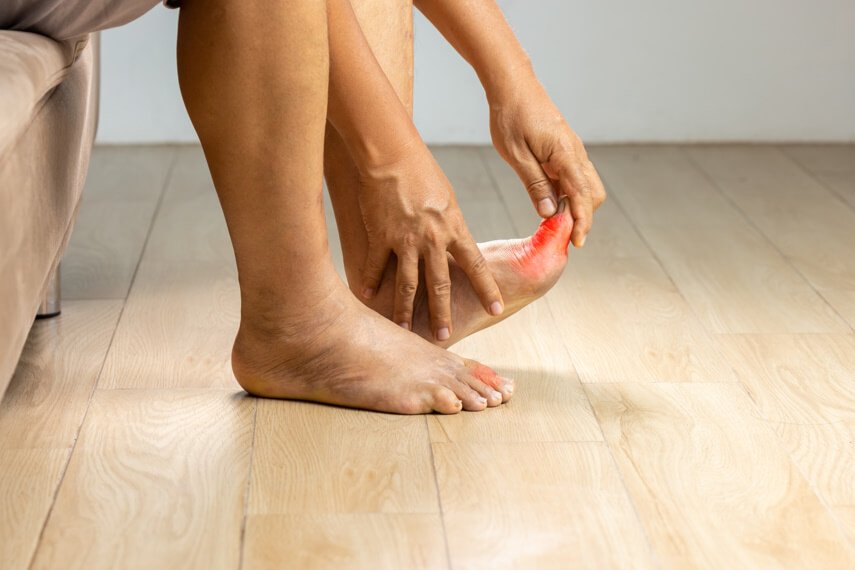Types of Gangrene and Their Treatment Options
Gangrene is a serious medical condition that demands immediate attention. It occurs when body tissue dies due to lack of blood supply, severe infection, or both. Understanding the gangrene types, recognising symptoms, and seeking timely treatment from a gangrene specialist doctor can make a life-saving difference.
What is Gangrene?
In simple terms, gangrene is the death of body tissue. It is most common in the extremities such as toes, fingers, or feet, but it can also develop inside the body. While gangrene synonyms include “tissue death” or “necrosis,” the condition goes beyond terminology. If left untreated, gangrene can spread quickly, becoming life-threatening.
Types of Gangrene
Dry Gangrene
Dry gangrene typically develops due to reduced blood flow. The affected area becomes dry, shriveled, and changes colour from brown to black. It progresses slowly and is often seen in individuals with diabetes or poor circulation.
Wet Gangrene
Wet gangrene results when bacterial infection combines with poor blood circulation. The tissue becomes swollen, blistered, and releases a foul odour. Because of rapid bacterial growth, wet gangrene spreads quickly and is considered a medical emergency.
Gas Gangrene
Caused by certain bacteria such as Clostridium perfringens, gas gangrene produces dangerous toxins. The condition is characterised by tissue swelling, gas bubbles under the skin, and severe pain. Without urgent intervention, it can spread rapidly and become fatal.
Internal Gangrene
Internal gangrene affects organs such as the intestines, gallbladder, or appendix. It usually develops due to restricted blood flow or infections. Symptoms may not be obvious initially, but this type is extremely dangerous and often requires surgical treatment.
Fournier’s Gangrene
A rare but severe form, Fournier’s gangrene affects the genital and perineal areas. It spreads rapidly and demands immediate care from a gangrene treatment center. Men are more commonly affected, but women can also develop this condition.
Gangrene Symptoms
Recognising symptoms early is vital for timely care. Common warning signs include:
- Skin discolouration (blue, black, purple, or green)
- Severe pain followed by numbness
- Swelling and blisters filled with fluid
- Foul-smelling discharge
- Fever and general weakness
- Crackling sensation under the skin in gas gangrene
These symptoms, combined with known gangrene causes such as diabetes, trauma, or infections, should prompt an urgent visit to a gangrene specialist doctor.
Treatment Options
Medical Treatments
For early-stage gangrene, antibiotics are prescribed to fight infection. In some cases, blood-thinning medications or treatments to improve circulation are used. Oxygen therapy, particularly hyperbaric oxygen therapy, can also help slow the spread and encourage healing.
Surgical Treatments
Advanced gangrene often requires surgical removal of dead tissue to prevent further spread. Options include:
- Debridement: Removing the dead tissue to allow healing.
- Vascular surgery: Restoring blood flow to the affected area.
- Amputation: In severe cases, removal of the affected limb may be the only option to save the patient’s life.
Supportive Care
Supportive care is an essential part of recovery. Pain management, wound care, and nutritional support help patients regain strength. Visiting a gangrene treatment center ensures comprehensive care under one roof, with access to both medical and surgical expertise.
Conclusion
Gangrene is not a condition to ignore. From dry gangrene to more critical forms like gas gangrene or Fournier’s gangrene, each type requires specialised treatment. Early diagnosis, combined with professional care from a gangrene specialist doctor, is the key to recovery. Whether through medicines, surgery, or supportive care, modern gangrene treatment options can control the condition and prevent life-threatening outcomes.
FAQs
Can gangrene be treated without surgery?
Yes, early cases may be managed with antibiotics, wound care, and oxygen therapy. However, advanced stages often require surgical intervention.
Who is at risk of gangrene?
People with diabetes, peripheral artery disease, severe injuries, infections, or compromised immunity are at higher risk.
Is gangrene life-threatening?
Yes. Without timely gangrene treatment, the infection can spread quickly, damage vital organs, and become fatal. Immediate medical attention is crucial.



.jpg)

